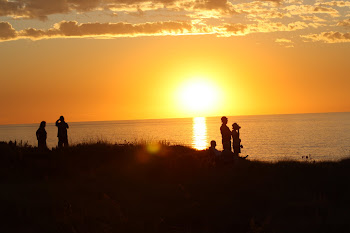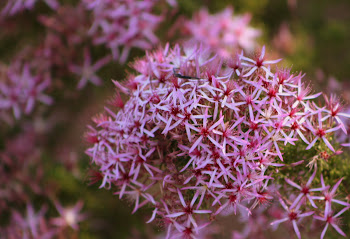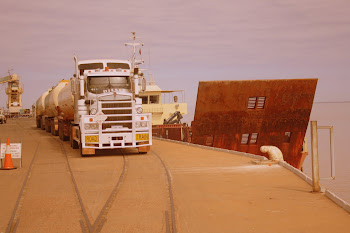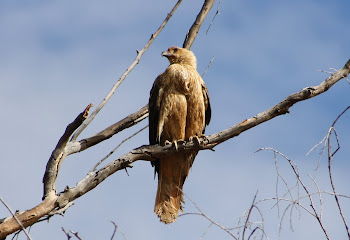Robe River and new and old Onslow
Cossack was worth exploring a second time and before we left Point Sampson we spent some more time looking at the government buildings that have been preserved and looking at some of the interpretive signs around the old town. The Roebourne Art Prize exhibition was in progress at the old bond store and in a number of the other buildings. The prize money on offer was quite substantial and the entries came from far and wide, in excess of a thousand entries were on display and we spent some time admiring some of the works.
The old Cossack court house is also open and worth “a gold coin donation” – although there were some people (of course) who just visited and looked and didn’t donate. These will be the same people who will complain in future that there is nothing to see!!
I had noticed that I had not included photographs of some of the old buildings at Cossack or Roebourne in previous blogs, so I have included some shots of some of them. We also found and photographed some Sturt desert pea growing on a beach at Point Sampson – quite a way from the desert!
Having mooched around the Roebourne / Cossack / Point Sampson / Karratha area for about three weeks enjoying the excellent weather it was area time to hit the road once again and move slowly south.
After a final visit to Karratha to buy a week’s worth of food and to refuel, we headed down the highway for only 150 Km or so to a free camp at Robe River. We managed to find a very nice spot right on the river right next to a large tree full of budgerigars. The budgies entertained us for the afternoon, chattering away as they popped in and out of their nests in the numerous hollows in the tree.
As well as the budgies there were numerous white-plumed honeyeaters in the large tree and in the surrounding smaller trees. At one stage during the afternoon all of the birds quickly flew away or fell completely silent as what I believe to be a grey falcon firstly flew overhead and then flew into the large tree, hunting for food. It didn’t take long for the falcon to discover a white-plumed honeyeater’s nest and we were rained with feathers as the unfortunate occupant became the falcon’s evening meal. In a nearby tree a pair of black faced cuckoo shrikes were busy feeding some small chicks and I was able to get a couple of reasonable shots.
We left Robe River reluctantly and headed south once more to Onslow, a coastal village about 80 Km west of the highway where we decided to stop for a couple of days. Onslow has been a somewhat sleepy backwater, known for its Dampier Salt mining / loading facility and, to a lesser extent, some fishing industry and it is also known as a support base for a number of offshore oil and gas projects. The platforms are visible on the horizon as is some sort of storage facility on a nearby low lying island.
The Mackerel Islands are not far off shore, quite a good fishing spot by all accounts and the Monte Bello Islands are also not far away. Those people of our vintage will remember the Monte Bello Islands at the site of some atomic testing in the late 50’s.
There is a buzz of activity around Onslow at the moment with work beginning on a new site near Old Onslow, site of the original town. Some of the workers setting up the site told me that they will be there until Christmas and the site, when opened will employ a couple of thousand people. Andrew (Twiggy) Forrest of Fortescue Metals was mentioned as the prime mover of this site so anything is possible.
Onslow was originally situated near the mouth of the Ashburton River. We should remember that, for many years, there were no roads to speak of in this part of the world and most transport was carried out using coastal shipping, the well-known State Ships fleet, used to transport people, stock and produce to and from many small coastal towns.
Old Onslow was established in 1885 to support the pastoral industry and it also became a base for pearling luggers. The government provided a lot of infrastructure with a hospital, doctor’s residence, magistrate’s house, police station, court house and gaol. As was the problem in many towns established near the mouths of large rivers, silting began to cause problems and in Onslow’s case led to the building of another jetty nearby.
Onslow’s problems became more serious after damage from a cyclone in 1909 and successive cylcones shortly after. It was then decided to build a deep water point at Beadon Bay about 40 Km up the coast and Onslow was moved to this new site in 1925. The only buildings now remaining at Old Onslow are the old gaol and police station. The walls show some evidence of being visited by members of the RAAF, maybe there was a camp nearby during WW2
There was some wartime activity near Onslow during the Second World War and it was bombed by the Japanese at one point, becoming the southernmost point of mainland WA to be bombed.
NEXT STOP GIRALIA.









































































No comments:
Post a Comment